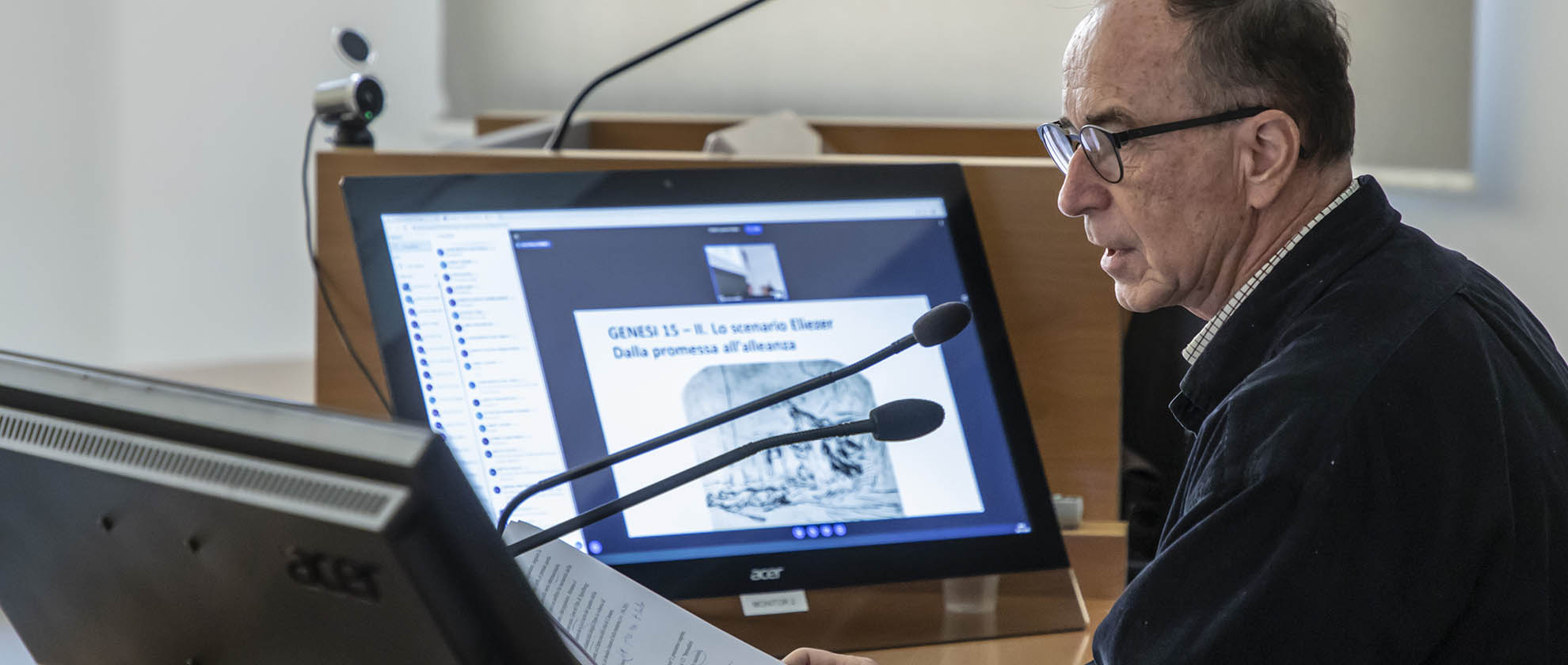- Home
- La Gregoriana
- 58 - To See All Things New in Christ
- Teaching in the Digital Age
Share:

The pandemic has accelerated the digitalisation process in society,
bringing new opportunities and challenges to light.
Even the Gregoriana has remodelled its training offer
with the adoption of the Moodle platform and blended learning
between digital and onsite modalities. A change which goes
beyond the emergency situation and looks into our mission.
Our present-day society is living in a Digital Age, in the words of Marc Prensky. Its complexity is due to the radical transformations brought about by digital technologies. Indeed, a variety of digital developments in society have been accelerated by the COVID-19 pandemic. Besides gaining an intellectual appreciation of this transformation with the adoption of the e-learning Moodle platform coupled by blended learning, the Gregorian has gone from the theoretical/notional model of knowledge to the pedagogical challenge of education in a changing era.
Discernment enlightened by faith
The younger generation is today an island in an archipelago of real, presumed or imagined relationships, and it appears that young adults are not all trained - nor culturally prepared - to meet the challenges of a digital age. By their very nature, digital media stand between us and what is real: they provide us with selected versions of the world, rather than direct access to it, combining different forms of communication in a text that is instantly conveyed and disseminated on a global scale.
From this perspective, there is an urgent need to address the issue of media education. The outcome of this type of education is known as media literacy, which strikes a more urgent note, especially in the case of the younger generations. According to the expert opinion of German pedagogue Dieter Baacke, media literacy comprises various dimensions that can be summarised as follows: critical media literacy, mediology, the ability to use media-based tools, and digital media creation skills.

Indeed, the state of neglect experienced by the younger generations of digital natives, coupled by the lack of training for “digital immigrants”, is producing a form of “digital illiteracy” whereby digital media texts are virtually inaccessible to most people in terms of objective and value-based assessment. This unprecedented condition, marked by our failure to distinguish the value of a deluge of information overwhelming us on a daily basis, may well cause citizens to lose the ability to be autonomous in society. Moreover, communication media, especially digital media, are widely considered powerful agents of socialization in present-day society, and, according to certain studies, have come to replace traditional agents such as the family, the Church and the school.
We are now facing an ethical dilemma regarding the identity and education of the younger generations, but it is also a dilemma of a religious nature, since through the lenses of faith we see life as a vocation, and the Relationship with Christ our Lord as having the power to illuminate all other relationships.

A critical understanding of digital learning
On a practical level, it is necessary to assess and understand the limits of implicit learning delivered by a digital age on a daily basis. Concerns also arise with regard to the fact that the ease of Internet, e-mail and social media access has caused numerous aspects of personal interaction to become digital, thereby replacing the traditional forms of interaction. Moreover, the digital explosion raises fears of a growing digital divide between rich and poor, not only between individuals but also between nations. The term ‘digital divide’ has been coined to define the gap separating those individuals who have access to new forms of information technology - notably computers and the Internet - from those who have no or limited access. The expression also refers to inequalities in acquiring the resources or skills needed to be an active participant in the information society.
Finally, it would appear appropriate to reflect on the value system offered by the communication medium to young adults on issues such as the meaning of life, corporeality, the emotional sphere, gender identity, justice and peace. In the 20th century, Harold Innis theorised that the media cannot be considered as neutral instruments. Accordingly, by their very nature, they influence interactions between individuals as well as the expression and circulation of knowledge; society can only shape and give guidance (within certain limits) to evolving communication media.
The manner in which we are reshaping our educational offerings, is therefore not only a timely response to health challenges. In fact it is also meant to be the fruit of discernment as to the extent and the ways in which a digital age challenges our mission.

